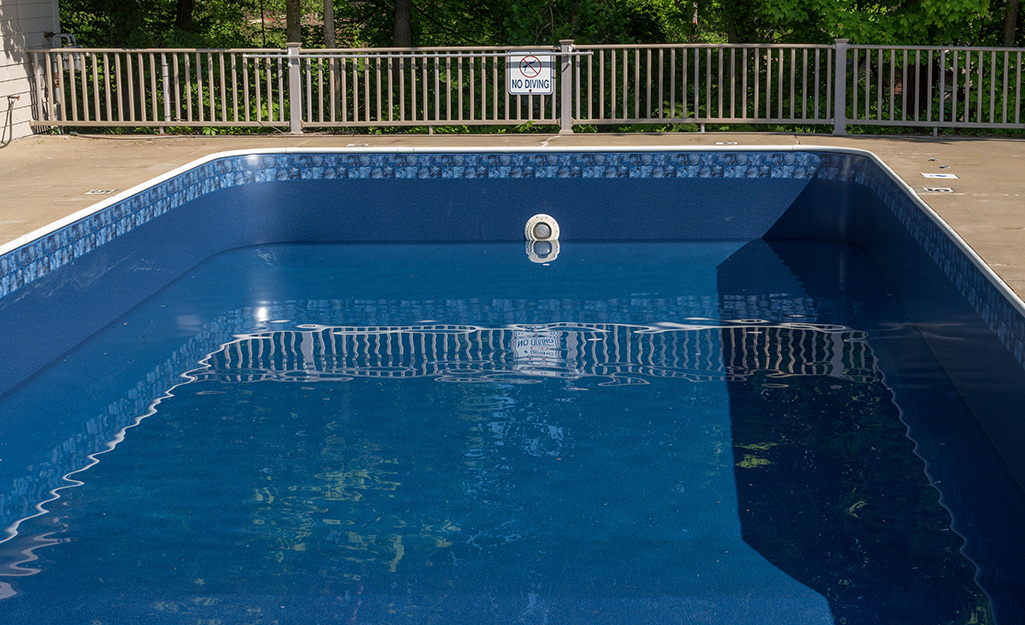To winterize your swimming pool, follow these steps: Remove all debris and balance the water chemistry. Lower the water level, drain the filtration system, and disconnect any equipment.
Winterizing your swimming pool is an essential step to ensure its longevity and protect it from freezing temperatures. By following a few simple steps, you can safeguard your pool against potential damages and save on repair costs in the long run.
This article will outline the necessary actions to effectively winterize your swimming pool. By removing debris, balancing the water chemistry, lowering the water level, draining the filtration system, and disconnecting equipment, you can ensure that your pool remains in top condition during the winter months. So, let’s dive in and explore the process of winterizing your swimming pool step by step.
Choosing The Right Time
When it comes to winterizing your swimming pool, choosing the right time is crucial for ensuring that your pool is protected from the harsh winter conditions. Optimal timing for winterization and considering local weather patterns are essential factors to take into account.
Optimal Timing For Winterization
Before the temperature consistently drops below 65°F, it’s ideal to commence the winterization process. This provides ample time to make necessary preparations before the harsh winter sets in.
Considering Local Weather Patterns
Understanding the unique weather patterns in your local area is pivotal to determining the right time for pool winterization. Be aware of when the first frost typically occurs and use this as a guideline for initiating the process.

Credit: www.youtube.com
Cleaning And Balancing
One of the key aspects of winterizing your swimming pool is cleaning and balancing. It’s essential to ensure the pool is thoroughly cleaned and chemical levels are properly balanced before closing it for the winter season. This will help to maintain the pool’s condition and make the reopening process easier when the warmer months return.
Thorough Cleaning Of Pool
To start preparing your pool for the winter, a thorough cleaning is necessary. This includes removing debris, scrubbing the walls and floor, and cleaning the filter to ensure that no dirt or algae is left behind. By performing a comprehensive cleaning, you can prevent the buildup of bacteria and contaminants during the dormant winter period.
Balancing Chemical Levels
Next, it’s important to balance the pool’s chemical levels to prevent any damage caused by imbalanced water. This involves checking and adjusting the pH level, alkalinity, and chlorine levels to ensure they are within the recommended range. Properly balanced chemicals will help to prevent corrosion, scale buildup, and algae growth, which can occur when the pool is not in use.
Protecting Pool Equipment
Inspecting And Maintaining Equipment
Regularly inspect and maintain pool equipment to ensure proper functioning and efficiency.
Draining And Storing Pool Accessories
Properly drain and store pool accessories to prevent damage from freezing temperatures.
Lowering Water Levels
Prepare your swimming pool for winter by lowering the water levels. Follow these steps to ensure a smooth winterization process for your pool.
Lowering the water levels of your swimming pool is an essential step in the winterization process. By reducing the water level, you can prevent potential damage caused by freezing temperatures and help maintain the overall condition of your pool. This article will guide you through the reasons for lowering water levels and provide you with proper water level adjustment techniques.
Reasons For Lowering Water
There are a few important reasons why you should lower the water level in your swimming pool before winter. Let’s explore these reasons in detail:
- Preventing freeze damage: When water freezes, it expands, which can cause significant damage to your pool’s structure and equipment. By lowering the water level below the skimmer and return jets, you minimize the risk of freeze damage.
- Protecting against debris: By keeping the water level lower during winter, you can prevent leaves, branches, and other debris from accumulating and potentially clogging your pool’s filtration system.
- Avoiding chemical imbalances: High water levels can lead to chemical imbalance over time. By reducing the water level, you can prevent excessive dilution of the pool chemicals, ensuring proper water chemistry throughout the winter.
Proper Water Level Adjustment
To effectively lower the water level of your pool, follow these simple steps:
- Turn off the filtration system: Before you begin lowering the water level, make sure to turn off the pool’s filtration system to prevent it from running dry or causing any damage.
- Drain the pool water: Use a submersible pump or a pool siphon to gradually lower the water level. Monitor the process to reach the desired level without draining too much water.
- Measure and adjust: Check the water level with a measuring tape or by using the pool’s skimmer. Ideally, the water level should be lowered below the skimmer and return jets, but be sure to follow any specific guidelines provided by your pool manufacturer.
- Consider climate conditions: If you live in an area with harsh winter conditions, it’s advisable to lower the water level even more to account for potential ice expansion. Consult with a pool professional or refer to your pool’s manual for specific recommendations.
- Take safety precautions: As you lower the water level, ensure that the pool cover is in good condition and properly secured. This will protect your pool from debris and provide an added layer of safety.
By following these steps and properly lowering the water level of your swimming pool, you can help safeguard it from freeze damage, maintain water chemistry, and ensure a smooth winterization process. Take the necessary precautions to protect your investment and enjoy a hassle-free pool opening in the spring.
Covering The Pool
One of the most important steps in winterizing your swimming pool is adequately covering it to protect it from the harsh winter elements. A proper pool cover not only helps to prevent debris from entering the pool but also helps to maintain the water’s clarity and cleanliness during the offseason. In this section, we will discuss the types of pool covers available and provide you with tips for proper installation to ensure your pool remains in pristine condition.
Types Of Pool Covers
When it comes to selecting a pool cover, you’ll find various options available in the market. Each type has its own unique features and benefits. Understanding the differences will help you choose the most suitable cover for your swimming pool. Here are a few common types:
| Cover Type | Description |
|---|---|
| Solid Pool Covers | Designed to completely block sunlight and prevent debris from entering the pool. They are typically made of heavy-duty materials like vinyl or mesh, offering maximum protection. |
| Mesh Pool Covers | These covers allow water to pass through while keeping leaves, twigs, and other larger debris out of the pool. They are lightweight and easy to handle, making installation and removal a breeze. |
| Automatic Pool Covers | For those seeking convenience, automatic pool covers are an excellent choice. They can be operated with a push of a button, providing effortless coverage and enhanced safety. |
Proper Installation Of Cover
Installing the pool cover correctly is crucial to ensure its effectiveness throughout the winter season. Here are a few steps to follow for proper installation:
- Thoroughly clean the pool to remove any debris or leaves that may have accumulated.
- Trim or remove any overhanging tree branches or shrubs that could potentially damage the cover.
- Spread the cover over the pool, ensuring it is aligned properly.
- Secure the cover using strong fasteners or anchors to prevent it from shifting or being blown away by strong winds.
- Tighten the cover to eliminate any sagging or gaps, as this will help maintain its effectiveness.
- If applicable, connect the cover to a roller system for easy removal and storage when the pool season resumes.
Following these steps will ensure that your pool cover is properly installed and provides the necessary protection for your swimming pool over the winter months. Remember, investing time in correctly covering your pool now will save you time and money in the long run, as it will help maintain water quality and prevent damage to the pool’s structure.

Credit: www.homedepot.com
Prevent Freezing Damage
Using Anti-freeze
When temperatures drop, using anti-freeze is crucial to protect your pool from freezing damage. Anti-freeze helps prevent water in your plumbing system from freezing during the coldest months.
Protecting Pipes And Plumbing
Protecting your pipes and plumbing is essential to prevent costly damage from freezing. Insulate pipes with foam sleeves to shield them from the cold and ensure they remain intact.
Regular Maintenance Checks
Regular maintenance checks are crucial for keeping your swimming pool in top condition, especially during the winter season. By staying on top of maintenance tasks, you can prevent costly damage and ensure your pool is ready for use when warmer weather arrives.
Schedule For Periodic Checks
Creating a schedule for periodic checks can help you stay organized and ensure no vital maintenance tasks are overlooked. Consider setting aside time each week to inspect the pool equipment, clean the pool’s surface, and check the chemical levels. Mark these dates on your calendar to stay consistent with your maintenance routine.
Addressing Issues Promptly
When conducting your regular maintenance checks, it’s essential to address any issues promptly. Whether it’s a small leak, a clogged filter, or imbalanced chemical levels, taking immediate action can prevent problems from escalating and causing more significant damage. Keep a list of common issues and their solutions handy to streamline the troubleshooting process.
Professional Assistance
When it comes to professional assistance with winterizing your swimming pool, hiring a professional can ensure a smooth and effective process. Benefits of hiring a professional and knowing when to seek expert help are crucial aspects to consider for the optimal care of your pool.
Benefits Of Hiring A Professional
Professional pool technicians have the expertise and knowledge to efficiently winterize your pool. They are equipped with the necessary tools and resources to complete the process with precision and skill, ensuring that your pool is adequately protected against the harsh winter conditions.
Moreover, professionals can provide tailored advice specific to your pool’s requirements, ensuring that every aspect is considered to prevent damage and ensure a hassle-free reopening when the warmer seasons return.
When To Seek Expert Help
Seeking professional assistance for winterizing your pool becomes essential if you lack the time, expertise, or resources to properly execute the process. If you notice any damages or potential issues during the preparation for winter, it’s best to consult a professional immediately to prevent any further damage.
Additionally, if you live in an area with particularly severe winter conditions, professional assistance becomes even more crucial to ensure the longevity and protection of your pool.

Credit: www.youtube.com
Conclusion
Preparing your pool for winter is essential to maintain its longevity and prevent damage. By following these simple steps, you can protect your investment and ensure a smooth reopening in the spring. Remember, proper winterization now saves you time and money later.
Stay proactive for a hassle-free swimming season!




